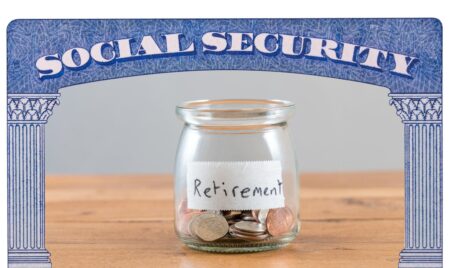With the regularity of Halley’s comet, but more frequent occurrences, the Greedy Geezer myth circles our orbit. The latest pair come from New York Times columnist Peter Coy and well-respected economist C. Eugene Steuerle and Glenn Kramon former editor of the New York Times. Both sets of arguments imply a dollar taken away from the old goes to the young.
That conclusion is wrong and misses the point. There isn’t any generational conflict. The issue is sky-high inequality of wealth, income, and lifespan. The point is class, not age.
Weak Political Will To Boost Children’s Needs and Retirement Security
The political and social forces that created shamefully high child poverty rates are the same ones that cause sky-high elder poverty rates — not enough political will to raise earnings of lower- and middle- income people. American child poverty rates are lower than elder poverty rates – 21.3% compared to 23.1%, per the Organisation for Economic Cooperation and Development figures. In other rich OECD nations the political will is stronger, as poverty rates are under 10%.
The intergenerational-conflict myth is weaponized to cut Social Security and Medicare and make people work longer. It intones that politicians who cut spending on the old raise spending on the rich.
I agree with Steuerle and Kramon’s point that “the young have been losing out for some time.” But so have most workers. The do-it-yourself retirement system dominated by voluntary pension plans and eroding Social Security (because retirement ages increased during the Reagan presidency) works best for those at the top. Seventy seven percent of the over $279 billion in retirement tax breaks, according to an Economic Innovation Group report, go to the wealthiest 20% of Americans. My recent research with Siavash Radpour and Jessica Fordon shows only the top 10% of Americans have enjoyed wealth increases over the last 40 years.
The Old Don’t Eat The Young: A Poor Understanding Of Public Budgeting
Comparing spending on older Americans with spending on younger Americans is catawampus.
Spending on the old includes inflated medical prices and spending on the young is dramatically undercounted because of unpaid care work. Just because the United States spends many times more money for a knee replacement than Germany and the country fails to provide universal pre-K doesn’t mean spending on the old is at the expense of kids.
Public finance doesn’t work that way. There is no empirical evidence that pension systems transfer funds from the young to the old.
Evidence from 63 nations shows that as spending for both young and old populations increase together, parts of society ally to pay for social insurance and education. A 10% increase in spending on education spending is correlated with a 7.3% increase in spending on pensions, I noted in a 2010 journal article for the International Review of Applied Economics.
In a working paper for the Levy Economics Institute of Bard College, economist Axel Boersch-Supan examined 16 countries finding a nation’s generosity toward the elderly does not reduce the share of total social expenditures for programs targeting youth. In an older 2004 National Bureau of Economic Research working paper, American economists Bommier, Lee, Miller and Zuber found in comparing U.S. education spending to Social Security and Medicare that young people have higher returns on their taxes than older cohorts.
Pension and education spending go together as a result of political solidarity among workers and families.
Policies To Address Inequality In Elder Income Security
When President Franklin D. Roosevelt signed Social Security into law in 1935, things were bad. Most men never retired, they just died on the job. Average life expectancy was lower, but the average improvement since then hides the harsh reality that most of the recent increase in longevity went to the top 50% of the income distribution, and most of that to white men at the very top of the social economic spectrum. The rich live longer and healthier.
At the same time those in the bottom two-thirds of the socioeconomic spectrum work longer and longer. White women have about 19 years of retirement; Black men have about 12 – there is no evidence that significant numbers of people will be retired for a third of their adult lives. And the idea that some elders get benefits when they don’t – the so-called need – is a red herring. Social Security is a form of insurance. As a counterexample, lots of rich people get reimbursed for car repairs through their auto insurance, even though they could pay out of pocket.
The recent New York Times pieces lifting up advocates for pension and Medicare cuts and working longer ignores the rising inequalities in health, wealth, and longevity; the often-detrimental health effects of working longer; the high risk of job loss and involuntary retirement at older ages; and the low wages and poor working conditions of many of the jobs available to older worker people.
And class conflict is ignored. Employers can clearly benefit from the end of retirement if they want a cheap desperate supply of older labor. Older academics and others in privileged jobs also aren’t hurt by working longer.
Policy Dos: To sustain the Social Security and Medicare programs, taxes must be increased — with the wealthy paying a fair share and health care costs have to come down. Tax breaks for retirement accounts should go to ordinary workers, for example by passing the newly introduced Retirement Savings for Americans Act.
Policy Donts: Do not cut benefits by raising the retirement age. I agree with Steuerle and Kramon that Medicare could be the first payer for older workers and employers wouldn’t have to pay such high premium for them. I also agree we need a strong minimum benefit could that essentially eliminate poverty among the elderly.
Voices From Regular Retirees
I don’t need to close with my own words. “Been around the block” writes “When your job involves taking meetings and lecturing to others you have no idea about the strain that comes from most jobs. I worked as a nurse for 46 years, and at age 67 I fully retired.… Those who espouse the elimination of Social Security and Medicare and working into one’s 70’s should all work for 30-40 years at a physically and mentally strenuous job and then decide. All the problems with funding can be completely eliminated if the cap was raised. The only reason this hasn’t been done is political, not financial.
[i] The academic interest started with a neutral piece of academic work Julia Lynch’s Age in the Welfare State is a highly referenced quantitative study that provides a ratio of social spending on the elderly compared to social spending on children.[i] Her straightforward statistic allows us to compare nations through a specific lens, that is, to compare welfare states for the “age-weighted” social spending in each of them. The lens implies a theory of the welfare state.
Read the full article here









